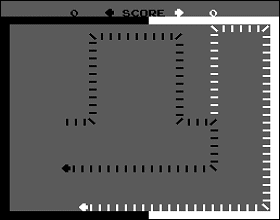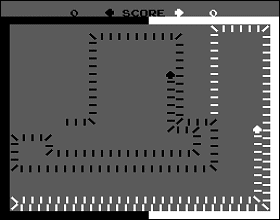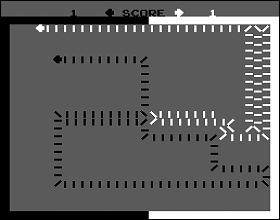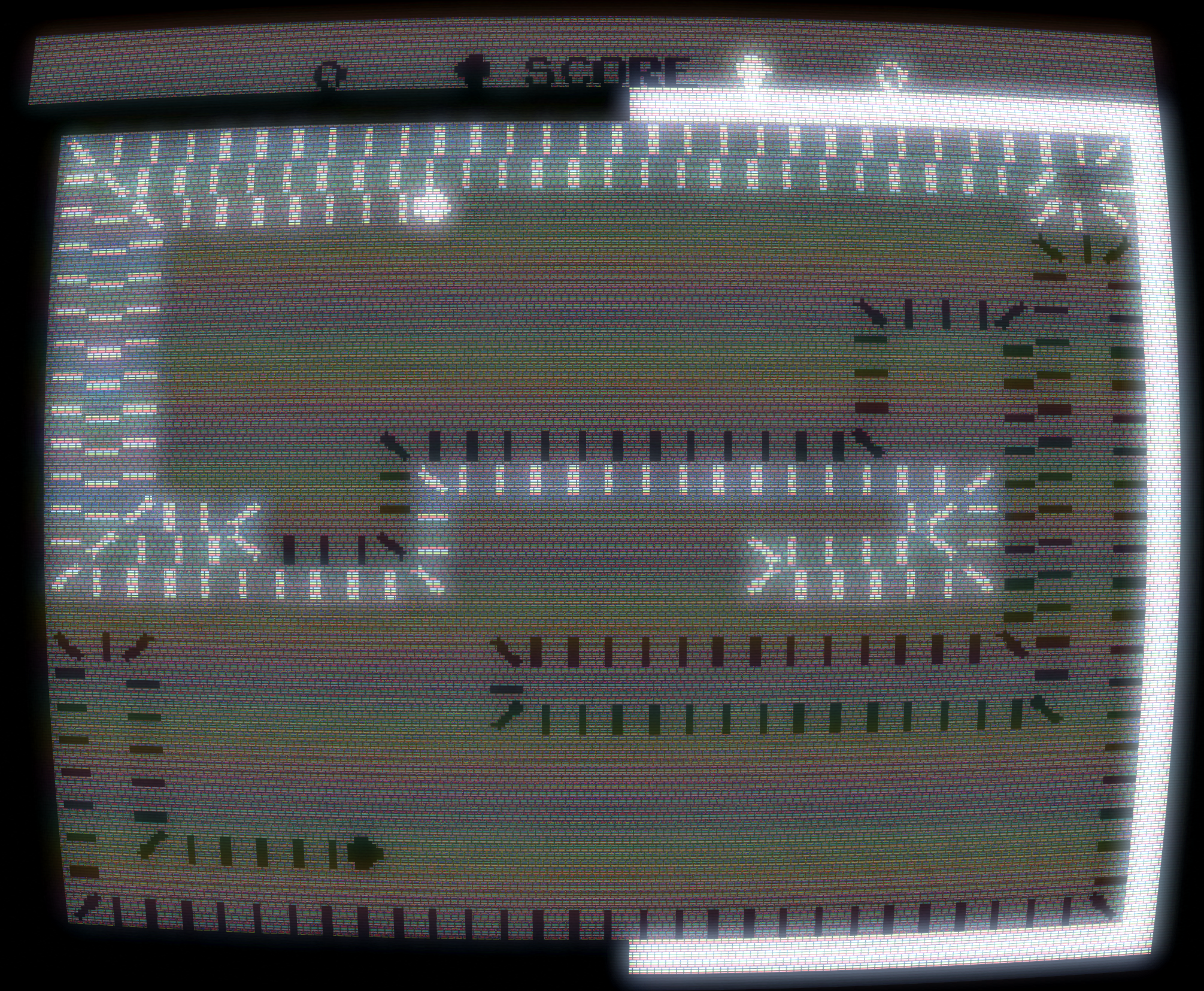 The Game: Up to two players control markers that leave a trail of dominos in their wake. The object of the game is to trap the other players by laying a wall of dominos around them that they can’t avoid crashing into – or forcing them to run into their own walls. Coming into contact with a line of dominos, either you own or someone else’s, collapses your own trail and ends your turn. The player still standing at the end of the round wins. (Atari, 1977)
The Game: Up to two players control markers that leave a trail of dominos in their wake. The object of the game is to trap the other players by laying a wall of dominos around them that they can’t avoid crashing into – or forcing them to run into their own walls. Coming into contact with a line of dominos, either you own or someone else’s, collapses your own trail and ends your turn. The player still standing at the end of the round wins. (Atari, 1977)
Memories: Another variation on the game concept that the movie (and game) Tron would later popularize as Light Cycles, Dominos is one of the few attempts anyone made to try to couch the concept in non-abstract, real-world terms (well, real-world if you can imagine someone having an infinite number of dominos to build a wall, but that’s neither here nor there).
 The domino theme also made Dominos one of the better-looking clones of the obscure Ramtek game Barricade (the first game to feature this basic theme); what Atari jettisoned was four-player games, instead limiting Dominos to a two-player contest (with a one-player option, as with Midway’s Barricade clone, Checkmate). As great a social space as the arcade was, the option for only one player to belly up to a machine, drop a quarter in and have a bit of fun was becoming standard-issue.
The domino theme also made Dominos one of the better-looking clones of the obscure Ramtek game Barricade (the first game to feature this basic theme); what Atari jettisoned was four-player games, instead limiting Dominos to a two-player contest (with a one-player option, as with Midway’s Barricade clone, Checkmate). As great a social space as the arcade was, the option for only one player to belly up to a machine, drop a quarter in and have a bit of fun was becoming standard-issue.
 Video games in the arcade may have gotten their start with two-player numbers like Pong, and while there was no shortage of great two-player games still on the horizon – such as Atari’s
Video games in the arcade may have gotten their start with two-player numbers like Pong, and while there was no shortage of great two-player games still on the horizon – such as Atari’s  Football – but the days of four- and even eight-player games like Quadrapong and Atari’s unwieldly Tank 8 were numbered. Video gaming was rapidly becoming a solitary activity, and a year later, that trend would be cemented by the one-player-against-the-universe mentality of a Japanese import called Space Invaders.
Football – but the days of four- and even eight-player games like Quadrapong and Atari’s unwieldly Tank 8 were numbered. Video gaming was rapidly becoming a solitary activity, and a year later, that trend would be cemented by the one-player-against-the-universe mentality of a Japanese import called Space Invaders.


